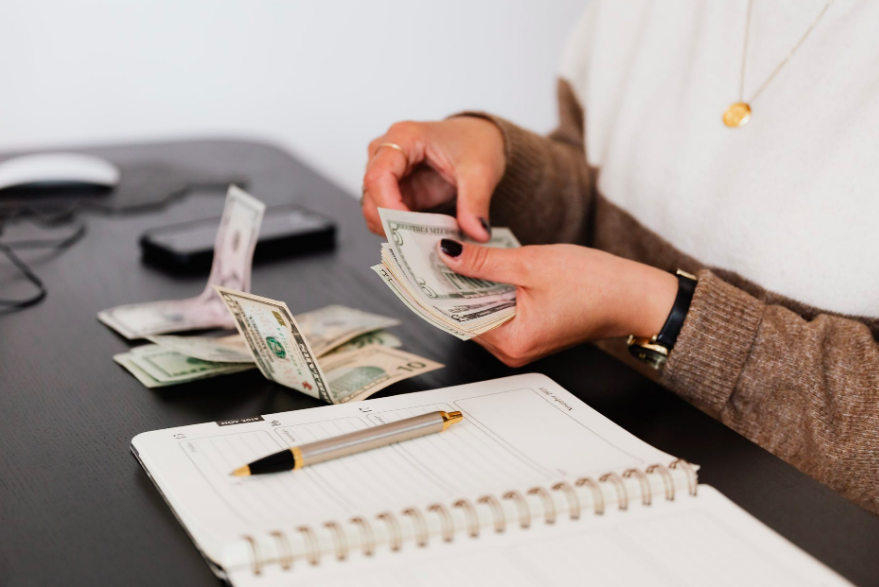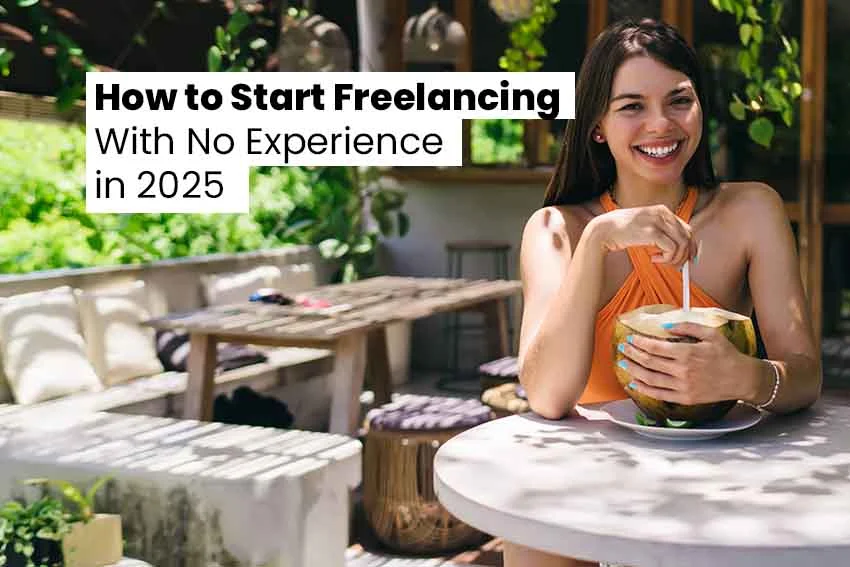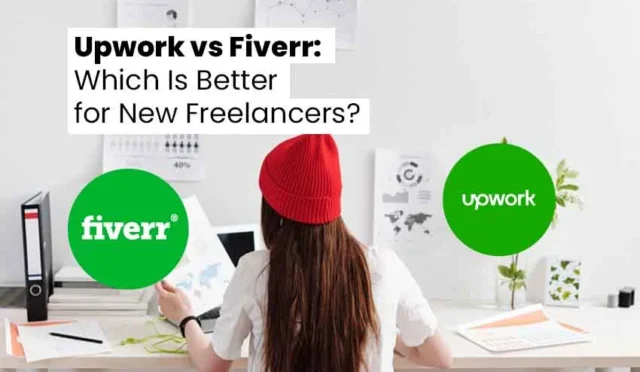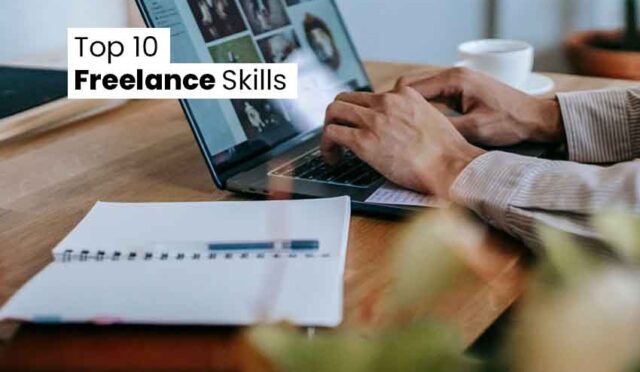The how to start freelancing with no experience in 2025 question is everywhere right now. Freelancing used to feel like a club for seasoned pros, but today platforms, AI tools, and client expectations make it possible to land paying work faster than ever. Even without a resume full of projects, you can package what you already know, practice on small, low-risk assignments, and build visible proof in weeks. In this guide, I’ll show you a step-by-step playbook for exactly how to do it—from picking a profitable niche and creating a zero-cost portfolio to writing proposals that win and delivering first-class results. If you’ve asked yourself how to start freelancing with no experience, you’re in the right place.
Contents
- 1 Why 2025 Is the Best Time to Begin
- 2 Pick a Narrow, Solvable Problem (Not a Vague Career)
- 3 Design a One-Page Offer that Sounds Like a Result
- 4 Build a Zero-Cost Portfolio in Seven Days
- 5 Where to Find Your First Clients in 2025
- 6 Write Proposals that Win (Without Bragging)
- 7 Price with Confidence (Even as a Beginner)
- 8 Use Free AI—But Lead with Human Judgment
- 9 Deliver Like a Pro: A Lightweight SOP
- 10 Contracts, Scope, and Payments—Keep It Simple
- 11 Build Credibility Fast (Even with Zero History)
- 12 Your First 30 Days: A Weekly Action Plan
- 13 2025 Platforms & Niches with Low Barriers
- 14 Outreach Templates You Can Copy
- 15 Taxes, Invoices, and the Unsexy Stuff
- 16 Mindset: Act Like a Consultant, Not a Task Taker
- 17 Frequently Asked Questions
- 18 A 90-Day Roadmap
Why 2025 Is the Best Time to Begin
In 2025, three trends make how to start freelancing with no experience more achievable than it was five years ago:
- Buyer behavior moved online—more small businesses hire remote freelancers for agile projects.
- No-code and AI assistants reduce production time, letting beginners deliver quality faster.
- Marketplaces, communities, and cohorts lower the barrier to entry.
Translation: You don’t need permission, only a system. And a system is exactly what you’ll build here. If you’re wondering how to start freelancing with no experience, start here and apply the steps exactly as written.
Pick a Narrow, Solvable Problem (Not a Vague Career)
Clients don’t buy “I’m a designer.” They buy outcomes: a landing page that converts, a logo refresh in 48 hours, a 5-email welcome sequence. Start by listing skills you already use at school or work—writing, spreadsheets, presentations, research, social media, basic design. Then map each skill to paid outcomes. This reframes how to start freelancing with no experience from a scary identity change into a simple offer-design exercise.
Examples of beginner-friendly offers:
- Edit and repurpose one blog post into 5 LinkedIn updates.
- Clean a messy Google Sheet and build one dashboard.
- Turn a Zoom transcript into a polished article.
- Create 10 product photos with simple props and natural light.
- Record a product tutorial and add captions.
The fastest path for anyone asking how to start freelancing with no experience is to turn one skill into one outcome for one audience.
Design a One-Page Offer that Sounds Like a Result
Your offer should answer three questions in one glance: who it’s for, what outcome you deliver, and by when.
Use this template:
- For [audience], I deliver [tangible result] in [timeframe] for [price range].
Add 3 bullets: scope, process, proof. Keep it to a single page or a sharp profile section on your marketplace of choice. Clarity closes deals, and clarity is the backbone of how to start freelancing with no experience in any market.
Build a Zero-Cost Portfolio in Seven Days
Yes, you can have proof without client history. Create “public samples” that mimic paid projects.
Day plan:
- Research 3 target clients; collect brand voice, visuals, and offers.
- Create one sample asset per client: a landing section, a social carousel, a short explainer, a cleaned dataset, or a pitch deck slide.
- Publish on a free Notion page, GitHub, Behance, or a Google Drive folder with viewer links.
- Write 3-line case notes: problem → approach → result (hypothetical but realistic numbers).
A tiny public portfolio removes the biggest barrier in how to start freelancing with no experience: lack of visible proof.
Where to Find Your First Clients in 2025
Start where buyers already have intent:
- Upwork/Contra/Fiverr/PeoplePerHour: filter for small, fast projects; bid selectively.
- LinkedIn Services + Creator Mode: post one helpful thread daily; DM warm leads, not random blasts.
- Niche job boards & communities (Indie Hackers, r/smallbusiness, design/dev Discords): share your sample, offer a tiny free audit.
- Local-with-remote delivery: cold email 20 nearby businesses each week with a before/after mockup.
Aim for two micro-projects in the first month. That is how to start freelancing with no experience done right—focused, fast, and learn-driven. Client discovery is half the battle in how to start freelancing with no experience; treat it like a daily habit.
Write Proposals that Win (Without Bragging)
Clients skim. Use a four-part micro-proposal:
- Mirror the goal in one line (“You want a product page that reduces drop-offs”).
- Plan in three bullets (deliverables, timeline, tools).
- Proof with one relevant sample and a sentence of outcome (“cut time-to-publish by 40% on my last build”).
- Low-friction next step (“If approved, I’ll send a one-page scope and start tomorrow”).
Keep it to 150–200 words. Precision beats polish when you’re new. Short, outcome-driven proposals are the cheat code for how to start freelancing with no experience because they reduce risk for buyers.
Price with Confidence (Even as a Beginner)
Start with a range, not an hourly guess. Productized, outcome-based ranges feel safer to clients.
Example tiers for a simple service (e.g., blog repurposing):
- Starter: $95 – Clean the draft, SEO pass, two social posts.
- Growth: $195 – Starter + long-form LinkedIn + hero graphic.
- Pro: $295 – Growth + email version + upload to CMS.
Communicate that revisions are limited (e.g., two rounds) and extra work has clear add-ons. Transparent pricing makes how to start freelancing with no experience less about negotiation and more about fit.
Use Free AI—But Lead with Human Judgment
Generative tools can brainstorm headlines, fix grammar, summarize calls, and mock up design ideas. Your edge is knowing what to keep, what to cut, and how to meet the brief. Disclose when you use AI for drafting, and always edit for voice, accuracy, and originality. Create a simple policy line in proposals: “AI may assist drafting or formatting; final content is human-edited and tailored to your brand.” Used well, AI accelerates how to start freelancing with no experience by compressing the time from idea to draft.
Deliver Like a Pro: A Lightweight SOP
Quality beats quantity. Use a repeatable checklist:
- Confirm brief, audience, and success metric in writing.
- Share a small sample or outline in 24 hours.
- Ship the first version on time; label what’s done and what you need.
- Apply feedback once; protect scope with kindness.
- Package files neatly; include a quick Loom explaining choices.
- Ask for one line of feedback and permission to showcase the work.
Process discipline is how how to start freelancing with no experience turns from an idea into repeatable income.
Contracts, Scope, and Payments—Keep It Simple
Use a one-page agreement: scope, timeline, ownership, confidentiality, payment terms (50% upfront for fixed-price work, Net-7 on delivery for repeat clients). Invoice via Stripe, PayPal, Wise, or your local provider; accept cards to reduce friction. For hourly work, track time transparently (Toggl/Clockify). Set boundaries in plain English: what’s included, what costs extra, and how many revisions. Simple contracts and fast payments keep momentum, which is vital for how to start freelancing with no experience in the first 90 days.
Build Credibility Fast (Even with Zero History)
Replace years with signals:
- Specific testimonials (even from mock clients or peers who reviewed your sample work).
- Before/after visuals or metrics from your samples.
- Consistent posting: one useful tip per day on LinkedIn/Twitter, one deeper thread per week.
- A simple lead magnet (e.g., “5-Point Homepage Audit”) that demonstrates value.
Signals of trust are the social proof that powers how to start freelancing with no experience even before your first big client.
Your First 30 Days: A Weekly Action Plan
Week 1: Choose one narrow offer and publish three portfolio samples.
Week 2: Send 10 tailored proposals; post 5 helpful snippets; book two discovery calls.
Week 3: Deliver two paid micro-projects; ask for testimonials; refine your SOP.
Week 4: Raise your top package by 10–15%; productize repeat requests; automate admin with templates.
By the end of Month 1, you won’t be asking how to start freelancing with no experience anymore—you’ll be doing it with clarity. A 30-day sprint answers how to start freelancing with no experience through action, not theory.

2025 Platforms & Niches with Low Barriers
- Content repurposing for founders (threads, shorts, newsletters)
- Landing page cleanup with no-code tools (Framer, Webflow)
- Podcast to blog pipelines using transcripts
- Presentation polish for sales/VC decks
- eCom image/video refresh with simple lighting and editing
Pick one, build three samples, and pitch companies already producing raw material you can improve. Picking a low-barrier niche is the most underrated move in how to start freelancing with no experience.
Outreach Templates You Can Copy
Cold DM (LinkedIn):
“Saw your latest post on [topic]. If you want to turn it into a 5-post LinkedIn series with consistent hooks, I can draft it by Friday. Fixed price, two revisions, quick turnaround. Want a 48-hour sample?”
Cold email:
Subject: Quick win for [Brand]’s [asset]
“Noticed [specific gap]. I can deliver [result] in 3 days for [price range], including [scope]. If helpful, I’ll send a 150-word outline today.”
Templates speed up outreach, and speed is crucial in how to start freelancing with no experience when you’re competing for attention.
Taxes, Invoices, and the Unsexy Stuff
Open a separate bank account. Save a percentage of each payment for taxes per your country’s rules (ask a local professional). Number your invoices, keep receipts, and export a monthly P&L from your payment tool. Professionalism is part of delivery. Clean finances build credibility—a silent advantage in how to start freelancing with no experience.
Mindset: Act Like a Consultant, Not a Task Taker
Consultants ask why before how, frame trade-offs, and propose the simplest path to the outcome. Adopt this posture from Day 1 and you’ll command better projects sooner—even as you learn. Adopting a consultant mindset reframes how to start freelancing with no experience from begging for work to diagnosing problems.
Frequently Asked Questions
Do I need a website? A one-page Notion or hosted portfolio is enough to start.
What if I have no testimonials? Use peer reviews, before/after samples, and generous trial pricing for the first two clients.
How do I avoid scope creep? Write scope bullets and a change-order line in your agreement.
How do I stand out? Specialize by problem, not title. “I fix slow homepages” beats “I’m a developer.”
Is how to start freelancing with no experience realistic if I have a full-time job? Yes—start with nights/weekends and productized services.
These answers remove common blockers and make how to start freelancing with no experience feel doable today.
A 90-Day Roadmap
Days 1–7: Build three portfolio samples and a one-page offer.
Days 8–30: Send 40 targeted proposals/DMs, close 3–5 micro-projects, and collect testimonials.
Days 31–60: Raise prices 15%, create a repeatable package, and streamline with templates.
Days 61–90: Add a second acquisition channel (LinkedIn + cold email), and pursue retainer offers for maintenance or recurring deliverables.
A 90-day runway is enough to validate how to start freelancing with no experience and secure repeat clients.
You don’t need permission, decades of experience, or fancy gear. You need a clear offer, consistent outreach, and a clean delivery system. If someone asks you how to start freelancing with no experience, give them this playbook: pick one outcome, build three public samples, send ten precise proposals a week, and treat every tiny project like a portfolio upgrade. Do that for 90 days and you won’t be “breaking in”—you’ll already be inside, improving, charging more, and choosing better clients. Follow this and how to start freelancing with no experience becomes a practical, step-by-step project—not a mystery.
Ready to go deeper? Explore our Freelance guides for step-by-step playbooks, proposal templates, pricing tips, and real client-winning strategies:
Explore the Freelance category →




